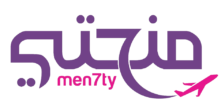The Employment-Based Permit: Your Comprehensive Step-by-Step Guide – Reddy Neumann Brown PC
The card process is a multi-step process that permits foreign nationals to live and work completely in the U.S. The process can be complicated and lengthy, but for those seeking long-term residency in the U.S., it is an important action to attaining that goal. In this post, we will go through the steps of the employment-based permit process in information.
Step 1: PERM/Labor Certification
The PERM/Labor Certification procedure is generally the initial step in the employment-based green card process. The procedure is designed to make sure that there are no competent U.S. workers readily available for the position which the foreign worker will not adversely affect the salaries and working conditions of U.S. employees.
Submit the Prevailing Wage Application

The employer starts the PERM process by drafting the task description for the sponsored position. Once the job details are finalized, a dominating wage application is submitted to the Department of Labor (DOL). The dominating wage rate is defined as the average wage paid to likewise utilized employees in a specific occupation in the area of intended employment. The DOL problems a Prevailing Wage Determination (PWD) based upon the specific position, job tasks, requirements for the position, the location of designated employment, travel requirements (if any), job to name a few things. The dominating wage is the rate the employer need to at least offer the permanent position at. It is also the rate that needs to be paid to the employee once the green card is gotten. Current processing times for prevailing wage applications are 6 to 7 months.
Conduct the Recruitment Process
PERM guidelines require a sponsoring employer to check the U.S. labor market through various recruitment methods for “able, ready, qualified, and readily available” U.S. employees. Generally, the company has 2 choices when deciding when to start the recruitment procedure. The company can start advertising (1) while the dominating wage application is pending or (2) after the PWD is provided.

All PERM applications, whether for a professional or non-professional profession, require the following recruitment efforts:
– 1 month task order with the State Workforce Agency serving the area of intended employment;
– Two Sunday print ads in a newspaper of general circulation in the location of intended work, a lot of appropriate to the profession and more than likely to bring actions from able, willing, certified, and readily available U.S. workers; and
– Notice of Filing to be published at the job site for job a period of 10 successive service days.

In addition to the compulsory recruitment pointed out above, the DOL requires 3 extra recruitment efforts to be published. The company should choose 3 of the following:
– Job Fairs
– Employer’s business site
– Job search site
– On-Campus recruiting
– Trade or professional company
– Private employment firms
– Employee recommendation program
– Campus positioning workplace
– Local or ethnic paper; and
– Radio or TV advertisement
During the recruitment procedure, the employer may be examining resumes and performing interviews of U.S. workers. The employer should keep in-depth records of their recruitment efforts, including the number of U.S. employees who obtained the position, the number who were interviewed, and the reasons they were not hired.
Submit the PERM/Labor Certification Application
After the PWD is released and recruitment is complete, the company can submit the PERM application if no qualified U.S. workers were discovered. Currently the DOL is taking 8 to 9 months to process PERM applications after submission. The day the PERM application is submitted develops the beneficiary’s concern date and determines his/her location in line in the green card visa line.
React To PERM/Labor Certification Audit (if any)
An employer is not required to send supporting paperwork when a PERM application is submitted. Therefore, job the DOL implements a quality control procedure in the type of audits to ensure compliance with all PERM policies. In case of an audit, the DOL usually needs:

– Evidence of all recruitment efforts carried out (copies of advertisements placed and Notice of Filing);.
– Copies of candidates’ resumes and finished work applications; and.
– A recruitment report signed by the company explaining the recruitment actions carried out and the results achieved, the number of hires, and, if appropriate, the variety of U.S. candidates declined, summed up by the specific lawful occupational reasons for job such rejections.
If an audit is issued on a case, 3 to 4 months are contributed to the total processing time of the PERM application.
Receive the Approved PERM/Labor Certification
If the PERM application is approved, the company will receive it from the DOL. The approved PERM/Labor Certification verifies that there are no qualified U.S. workers available for the position which the beneficiary will not negatively affect the earnings and working conditions of U.S. workers.
Step 2: I-140 Immigrant Petition
Once the PERM application has been approved, the next action is to file an I-140 immigrant petition with U.S. Citizenship and Immigration Services (USCIS). The petition should include the authorized PERM application and evidence of the beneficiary’s certifications for the sponsored position. Please note, depending upon the choice category and country of birth, a recipient might be qualified to submit the I-140 immigrant petition and the I-485 modification of status application simultaneously if his/her top priority date is present.

At the I-140 petition stage, the employer should also demonstrate its capability to pay the beneficiary the proffered wage from the time the PERM application is submitted to the time the permit is released. There are 3 methods to show ability to pay:
1. Evidence that the wage paid to the recipient is equivalent to or greater than the proffered wage (pay-stubs, W-2s);.
2. Evidence that the business’s earnings is equal to or greater than the proffered wage (annual report, job income tax return, or audited financial statement); OR.
3. Evidence that the business’s net assets amount to or higher than the proffered wage (annual report, income tax return, or audited financial statement).
In addition, it is at this phase that the employer will select the employment-based preference category for the sponsored position. The classification depends on the minimum requirements for the position that was noted on the PERM application and the staff member’s certifications.
There are numerous categories of employment-based green cards, and each has its own set of requirements. (Please note, some classifications might not require an authorized PERM application or I-140 petition.) The classifications consist of:
– EB-1: Priority Workers.
– EB-2: Professionals Holding Advanced Degrees and Persons of Exceptional Ability.
– EB-3: Skilled Workers, Professionals, and Unskilled Workers (Other Workers).
– EB-4: Certain Special Immigrants.
– EB-5: Immigrant Investors
After the I-140 petition is submitted, USCIS will examine it and might request additional details or documents by providing an Ask for Evidence (RFE).
Step 3: Permit Application
Once the I-140 immigrant petition is authorized, the recipient will examine the Visa Bulletin to determine if there is an offered green card. The actual permit application can just be filed if the beneficiary’s top priority date is present, indicating a green card is instantly readily available to the beneficiary.
On a monthly basis, the Department of State publishes the Visa Bulletin, which summarizes the schedule of immigrant visa (permit) numbers and indicates when a green card has actually appeared to an applicant based on their preference classification, nation of birth, and concern date. The date the PERM application is submitted establishes the beneficiary’s concern date. In the employment-based immigration system, Congress set a limit on the number of permits that can be released each year. That limit is currently 140,000. This suggests that in any given year, the maximum variety of permits that can be released to employment-based candidates and their dependents is 140,000.
Once the recipient’s concern date is present, he/she will either go through change of status or consular processing to get the green card.
Adjustment of Status
Adjustment of status involves looking for the green card while in the U.S. After a change of status application is submitted (Form I-485), the recipient is informed to appear at an Application Support Center for biometrics collection, which generally includes having his/her picture and signature taken and being fingerprinted. This details will be utilized to perform necessary security checks and for ultimate development of a permit, employment permission (work license) or advance parole file. The recipient might be alerted of the date, time, job and place for an interview at a USCIS office to address concerns under oath or affirmation relating to his/her application. Not all applications need an interview. USCIS authorities will evaluate the recipient’s case to figure out if it fulfills one of the exceptions. If the interview is successful and USCIS authorizes the application, the recipient will get the permit.
Consular Processing
Consular processing includes requesting the green card at a U.S. consulate in the beneficiary’s home nation. The consular workplace sets up an appointment for the recipient’s interview when his/her priority date becomes existing. If the consular officer grants the immigrant visa, the recipient is given a Visa Packet. The beneficiary will pay a USCIS Immigrant Fee which is used by USCIS to process the Visa Packet and produce the permit. The recipient will provide the Visa Packet to the U.S. Customs and Border Protection (CPB) officer at the port of entry. The CBP officer will inspect and figure out whether to confess the beneficiary into the U.S. If admitted, the recipient will receive the green card in the mail. The green card acts as proof of irreversible residency in the U.S.



